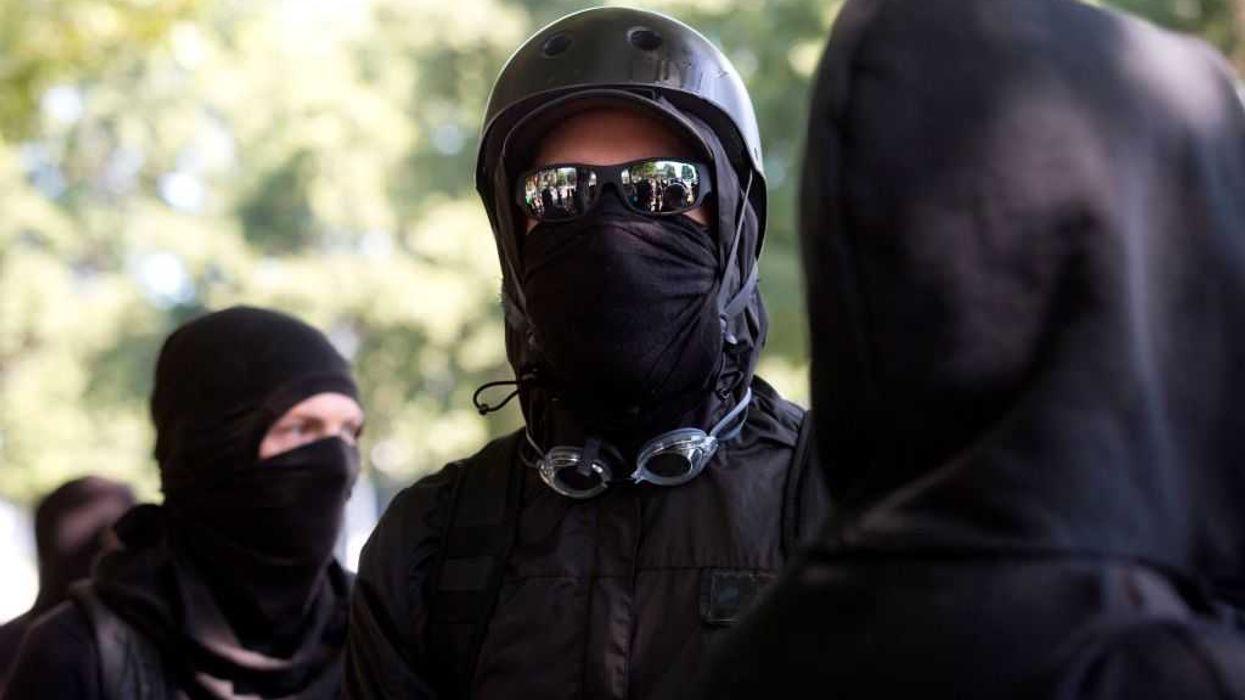As Congress draws closer to a vote on immigration reform, the truth about the undeclared war on our border is exposed in For The Record: Borderless. While politicians in Washington insist people are only sneaking into the country in search of the American Dream, never before seen surveillance footage shows far too many violent criminals and potential terrorists are organizing and crossing the border in plain sight - putting America’s safety in jeopardy. Hear from the people who actually live along the border and learn from some of the foremost immigration experts when For The Record: Borderless premieres TONIGHT at 8:30pm ET only on TheBlaze. Not a subscriber? Start your 14-day free trial of TheBlaze TV HERE.
On radio this morning, Glenn spoke with TheBlaze’s chief Washington correspondent, Sara Carter about tonight’s For The Record. Sara describes the situation at our southern border as “lawless,” with ranchers forced to spend day in and day out watching, guarding, and protecting their property. From drug cartels who have set up transit routes straight through American ranches to the often violent trafficking of humans and contraband, those who live along the U.S./Mexico border live in constant fear. What are the implications for the nation as a whole?
Read a full transcript of the interview below:
GLENN: Tonight, For The Record takes a look at the situation in our nation as borderless, and it truly is. And we are going to talk to ‑‑ we sent our cameras out, For The Record, to talk to the people, Americans on the border that have never been interviewed before. Not just by the press but not even by our own government. Nobody has taken the time to interview these people, and they are the people that have safe rooms in their house. They are the people that can't say, "Get off my land." They are the people that lock their children truly in closets when they see something coming across the border because they know there's no help coming. Sara Carter is our senior Washington correspondent for TheBlaze and she is the woman who really broke and really helped free Compean and Ramos. She's the one who really broke that something was going on and something was wrong with that story. She's also the woman who brought us the story of the underground tunnels, and we have been so fortunate to be able to hire her and make her our senior Washington correspondent. She was instrumental in this episode of For The Record, which will air tonight, is it at 8:30pm? Is that right?
SARA: It's at 8:30pm, that's correct, Glenn.
GLENN: 8:30pm tonight.
SARA: It's tonight at 8:30pm ET.
GLENN: Okay. So Sara, tell us ‑‑ tell a little bit about what we're going to see tonight.
SARA: I think we're going to show the American public, our viewers, the reality of living on a lawless borderland, a borderless land between Mexico and the United States. They are going to get it from the words of the ranchers themselves that have to spend day in and day out watching their property, from drug cartels that are utilizing their transit routes straight through American ranches, moving humans, moving contraband and the fear that these ranchers feel all the time living among those drug cartels and the dangers that it poses to the rest of the United States.
GLENN: The interesting thing here is there is ‑‑ these are people who have lived on the border their whole lives and some of them for generations.
SARA: Correct.
GLENN: And they have had these ranches for generations, they grew up, and they have always seen ‑‑ one of them said in one of the interviews that, you know, "I remember growing up and the guys would come to work in America and they would come across in the daytime and then they would go back across at night. And we would see them and we knew them and they weren't bad people."
SARA: That's right.
GLENN: This is a whole different world.
SARA: It's a totally different world now. And this is coming from, like you said, Glenn, generations of ranchers who have lived on the border. And I can tell you from interviewing them -- both sheriffs who have lived on the border for a long period of time, who had their mothers and fathers live on the border -- this is a whole different group of people crossing our border and this should scare everyone.
GLENN: I saw the ‑‑
SARA: This is not the same group.
GLENN: I saw the episode a couple of days ago before the final edits, and I will tell you that I ‑‑ it leaves you ‑‑ you know, the first thing I wrote back to the executive producer was, "Well, that just opens up a whole can of worms. There's about 700 other shows that we have to do on this now," and one of them is: It gave me the impression that there is coordination between the drug cartels and our side, the good guys supposedly. Do you feel that's going on?
SARA: Oh, yeah. Glenn, I mean, look, we've seen it in the past. We've seen people, you know, working for Department of Homeland Security that have are being caught red‑handed, you know, being paid off by the drug cartels, allowing cartel members to move across our border. You're talking about billions of dollars in the narcotics and contraband trade moving back and forth and that money purchases people. That money is their power, it's their control. And you have these coyotes working for the drug cartels that are literally stationed along the border watching our own border patrol agents, watching our own law enforcement, and they look for anything, in this case they can do to get someone on their side to allow them to move their contraband across the border. If they don't move it in the darkness of night, they move it straight across our highways during the day and right through our own law enforcement. And this is something that we need to look into in the future as well. But it goes beyond just the illegal immigrants who are crossing the border who are looking for jobs, this is about a new breed of people moving across the U.S. border. These are bad guys and they have bad intentions and they really do not care about the national security of the United States and they don't care about what they cross into our country.
GLENN: Okay. One ‑‑
SARA: And we have to remember that.
GLENN: One last question here. I notice that some of the ranchers had their voice disguised and they were filmed in the shadows.
SARA: That ‑‑
GLENN: Others were shockingly open with who they were and I mean, why did ‑‑ why did some of them say, "Yeah, show me." Was there no fear? Was it ‑‑
SARA: You know, no, I think there is fear. I think these are brave people. And you're brave when you fear something but you do it anyways. Some of these ranchers decided that they wanted the American public to know that they meant business, that they weren't just going to hide in the shadows, that they were going to tell them exactly what was going on and they were going to go fully on the record with it. And they are putting their lives in danger.
GLENN: Big time.
SARA: I mean, they are talking out against the most egregious and dangerous drug cartels in Mexico.
GLENN: And one of them is ‑‑
SARA: ‑‑ that utilize that area of the border to move their contraband. And they wanted the American people to know that there are some of us that are willing to stand up to this and they want the government to know, the federal government to know that it's their job to protect the American public. And for those that went into the shadows, they have reasons to hide too. They have children. They live, you know, they're new to the border or their ranches run right across areas where they have seen enormous amounts of violence and they've been threatened themselves. So for some there is a real reason to go in the shadows, and for others they feel like this is their time to speak out and get people to listen.
GLENN: Okay. Sara, thank you very much. Appreciate it. It's For The Record tonight at 8:30pm ET. It follows Pursuit of the Truth where we are looking for new documentary filmmakers. It's a new entertainment and information show all kind of wrapped up in one. Great show we produced together with Vince Vaughn and his people. And it's a great show. Tonight, premiere night on TheBlaze TV.
Don’t miss For The Record: Borderless, TONIGHT at 8:30pm ET only on TheBlaze. Not a subscriber? Start your 14-day free trial of TheBlaze TV HERE.

 PEDRO MATTEY / Contributor | Getty Images
PEDRO MATTEY / Contributor | Getty Images
 AFP Contributor / Contributor | Getty Images
AFP Contributor / Contributor | Getty Images